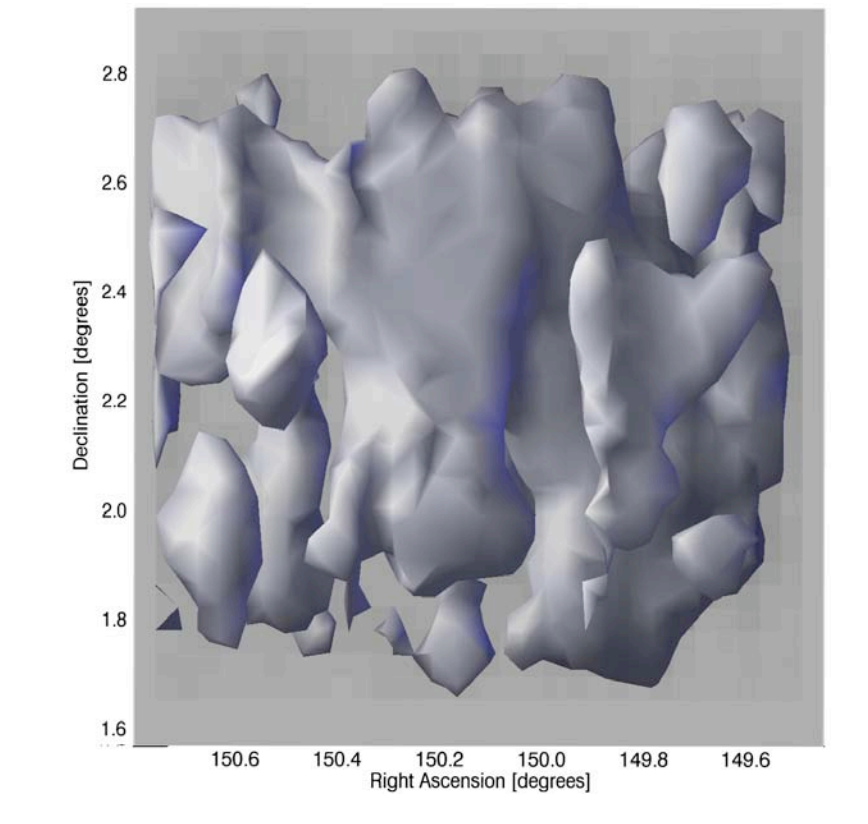| Authors: | R. Massey, ... , J.-L. Starck, ..., S. Pires et al. |
| Journal: | Nature |
| Year: | 2007 |
| Download: | ADS | arXiv |
Abstract
Ordinary baryonic particles (such as protons and neutrons) account for only one-sixth of the total matter in the Universe. The remainder is a mysterious "dark matter" component, which does not interact via electromagnetism and thus neither emits nor reflects light. As dark matter cannot be seen directly using traditional observations, very little is currently known about its properties. It does interact via gravity, and is most effectively probed through gravitational lensing: the deflection of light from distant galaxies by the gravitational attraction of foreground mass concentrations. This is a purely geometrical effect that is free of astrophysical assumptions and sensitive to all matter -- whether baryonic or dark. Here we show high fidelity maps of the large-scale distribution of dark matter, resolved in both angle and depth. We find a loose network of filaments, growing over time, which intersect in massive structures at the locations of clusters of galaxies. Our results are consistent with predictions of gravitationally induced structure formation, in which the initial, smooth distribution of dark matter collapses into filaments then into clusters, forming a gravitational scaffold into which gas can accumulate, and stars can be built.

